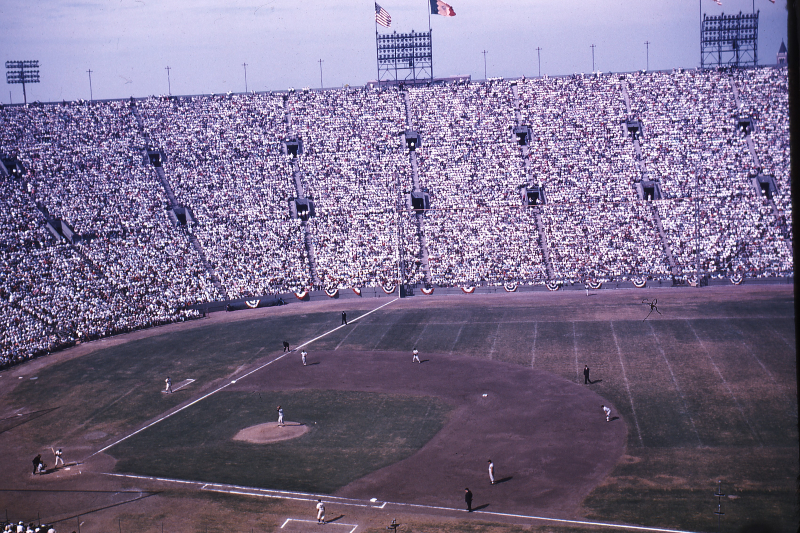
MLB’s collective bargaining agreement expired at 11:59 p.m. ET on Dec. 1, marking the first time since 1994 that the deadline passed without a new agreement. Baseball owners ‘locked out’ the players, meaning that all transactions are frozen until an agreement is reached.
Owner and player demands are not close to aligning, but each side asserts that it wants to make the game more competitive. How to do this is where the issues lie, specifically to solve a growing wealth gap between teams, player contracts, and players under team control. While each party claims that they’re negotiating fairly, each collective is dead set on maintaining their positions. If no agreement is reached by the start of training camp next February, part or all of the 2022 season could be in jeopardy.
In a strange olive branch to fans, Major League Baseball commissioner Rob Manfred laid blame for the owners’ lockout at the feet of the game’s players.
“Regrettably, it appears the Players Association came to the bargaining table with a strategy of confrontation over compromise,” Manfred wrote on Dec. 2. “They never wavered from collectively the most extreme set of proposals in their history, including significant cuts to the revenue-sharing system, a weakening of the competitive balance tax, and shortening the period of time that players play for their teams. All of these changes would make our game less competitive, not more.”
That’s intense, Mr. Commish.
Money has been the main schism between the two parties for decades, maybe since the beginning of the MLB. Points of contention listed by Manfred — raising the luxury tax threshold, revenue-sharing, establishing a minimum collective team salary, and balancing service-time for arbitration — have been stewing since the early 2000s.
What a fair share of the pie might be differs considerably in perspective right now. The two sides tried to hammer out a deal before the Dec. 1 deadline, but the owners reportedly “were not pleased” with the union’s proposal — a 12-team playoff format, a $30 million increase in the team luxury-tax threshold, a larger part of overall revenue, and less owner control over arbitration.
Where Manfred, in his letter, cites the $1.7 billion committed to free agents in November as evidence that player contracts are on the rise, most of this money was taken up by elite players on enormous deals. After spending was slowed by instituting a hard slotting system for draftees, steep draft-pick penalties for signing free agents, and stiff financial fines for exceeding the luxury tax, players began to see the fortunes gained in free agency decline after the 2011 and 2016 CBAs. Even as MLB revenues rise annually, the average player salary has dropped every year since 2017. Former journeyman MLB centerfielder and union representative Doug Glanville dug into the effect of these evaporating salaries with NPR.
“There is a middle class that’s disappearing,” Glanville said. “The last collective bargained here five years ago plus. That middle class pool, in terms of the aggregate of their salaries, has gone down significantly.”
Related Guides
In addition, hot prospects can lose a year of free agent, hundreds of thousands to millions of dollars, because of service-time manipulation. From the time players arrive in the pros, their arbitration clocks begin ticking toward year three when an arbitrator decides on an equitable worth between player and team proposals. That is the time players experience a big bump in salary for the first time, but teams have a great deal of control if this will be in year three or year four.
Former Chicago Cub top prospect, Kris Bryant, for example, a phenom who clearly showed he was ready for the show, spent the first month of his career in the minors, so that 2015 did not count toward this service. Even after spending an April in AAA, Bryant still went on to win the National League Rookie of the Year. Two years later, he missed out on millions of dollars because 2015 didn’t count toward service time.
Service time is apparently such an important factor for owners that they will only agree to altering time served if the new CBA avoids all other concerns. While Manfred asserts that the owners “worked hard to find compromise while making the system even better for players,” Evan Drellich of The Athletic responded with the following:
“The owners would not agree to make a counter on reserve system (which determines when players qualify for free agency) and luxury-tax issues unless the MLBPA agreed in advance to drop a number of key demands, including the time it takes players to get to free agency and revenue sharing between owners, a person with knowledge of the union’s position said. Such a precondition was something union leadership could not recall seeing before in bargaining, the person said, and the players did not agree to the request.”
Compromise can be tough, especially if you start out in a stage of denial.
There are several issues at hand integral to player livelihoods as well as to the game’s competitive balance. It’s critical players and owners work this out soon, but neither side is budging.
A January or early February deal would still have a major impact on the offseason landscape. A deal in the next four to six weeks would still delay Winter Meetings, the Rule 5 Draft, and arbitration discussions. Unsigned free agents would have to scramble to get contracts while teams would have to kick into overdrive to commence a normal spring training.
Spring training is set to begin Feb. 26 and opening day on March 31. Right now, only the best honest efforts from owners and players can assure that this happens. The MLB is very much at risk of losing games due to a labor dispute for the first time since 1995 and alienating more potential fans who will turn away if the games are not played.
Read More: Why Millionaire Pitcher Daniel Norris Still Lives in His Van



